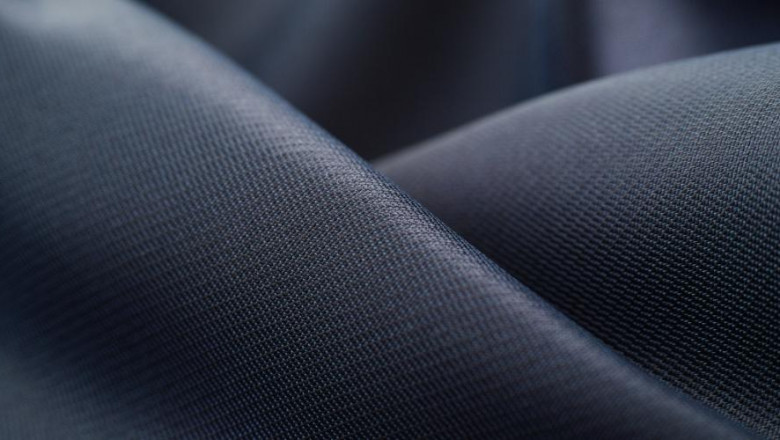views
The global antimicrobial textiles market is experiencing remarkable growth, driven by increasing awareness of hygiene, rising demand for protective clothing, and advancements in textile technology. Antimicrobial textiles are fabrics treated or embedded with agents that inhibit the growth of microorganisms such as bacteria, fungi, and viruses. These textiles play a crucial role in preventing infections, odor, and deterioration of fabrics, making them highly valuable across various industries.
Market Drivers and Trends
The primary driver for the antimicrobial textiles market is the growing concern about hygiene and health, especially in medical and healthcare sectors. Hospitals and healthcare facilities utilize antimicrobial textiles for surgical gowns, bed linens, and patient clothing to reduce the risk of infections and cross-contamination. The COVID-19 pandemic significantly boosted demand for antimicrobial textiles in personal protective equipment (PPE) such as masks, gloves, and gowns, accelerating market expansion.
Besides healthcare, the sports and activewear sector is also a significant contributor to market growth. Consumers seek garments that can resist odor and bacterial growth caused by sweat and prolonged wear. Antimicrobial properties in sportswear help maintain freshness, enhance garment longevity, and improve comfort, making these textiles popular among athletes and fitness enthusiasts.
The rise in demand from the home textiles segment is another vital trend. Products like antimicrobial bed linens, curtains, upholstery, and carpets are increasingly preferred for their ability to maintain cleanliness and resist microbial growth, thereby enhancing indoor air quality and overall hygiene in living spaces.
Technological Innovations
Advancements in textile finishing techniques and the development of new antimicrobial agents are shaping the future of the antimicrobial textiles market. Silver nanoparticles, copper compounds, zinc oxide, and chitosan are among the most commonly used antimicrobial agents. Silver nanoparticles are especially favored due to their strong antimicrobial activity and durability, making them effective in both natural and synthetic fabrics.
Researchers are also exploring sustainable and eco-friendly antimicrobial solutions to address environmental concerns associated with chemical treatments. Bio-based agents derived from plants and microbes are emerging as alternatives, offering antimicrobial efficacy with reduced toxicity and environmental impact.
Additionally, smart textiles integrated with antimicrobial properties are gaining traction. These textiles respond to environmental stimuli such as moisture or temperature to release antimicrobial agents when needed, providing targeted protection and prolonging the lifespan of the fabric.
Regional Insights
North America and Europe are currently leading markets for antimicrobial textiles due to high healthcare standards, stringent hygiene regulations, and increasing consumer awareness. The U.S. and Germany are major contributors, supported by strong R&D investments and established textile industries.
Asia-Pacific is projected to witness the fastest growth rate, driven by rising population, urbanization, and expanding healthcare infrastructure in countries like China, India, and Japan. Additionally, growing disposable incomes and rising awareness about personal hygiene in these regions are encouraging the adoption of antimicrobial textiles in various end-use sectors.
Emerging markets in Latin America and the Middle East & Africa are also expected to gain traction, driven by improving healthcare facilities and rising demand for functional textiles in the hospitality and consumer goods sectors.
Market Challenges
Despite its promising outlook, the antimicrobial textiles market faces certain challenges. High production costs and the complexity of manufacturing processes can limit adoption, especially in price-sensitive markets. There are also concerns regarding the long-term effects of some antimicrobial agents on human health and the environment, prompting regulatory scrutiny and the need for safer alternatives.
Additionally, ensuring the durability of antimicrobial properties after repeated washing and wear remains a technical challenge. Manufacturers are continuously working on enhancing the wash-fastness and longevity of antimicrobial finishes to meet consumer expectations.
Future Outlook
The future of the antimicrobial textiles market looks bright, with continuous innovations and growing demand across multiple industries. Increasing investments in research and development are expected to yield advanced antimicrobial solutions that are both effective and environmentally sustainable.
The integration of antimicrobial textiles with wearable technology and smart fabrics will open new possibilities for health monitoring and disease prevention. Moreover, collaborations between textile manufacturers, healthcare providers, and technology companies will drive product innovation and market expansion.






















Comments
0 comment